There is one thing all cat owners know. Those mischievous little troublemakers love nibbling on plants when they aren’t being watched. And there are several plants that can be poisonous to cats. So, if you have a cat, it’s best to avoid any plants that could be toxic plants at all costs. This should be done whether you have an indoor or outdoor cat as toxic plants can be found in both locations.
Lawnlove recently compiled a list of plants that can be toxic to cats as well as the symptoms that can occur if part of the plant is eaten. While plant-based diets are popular with humans, maybe it’s not the best option for our feline friends. Artificial plants actually might be best especially if your pet is prone to sampling the flora and fauna. But if live plants are a must then make sure to avoid any that are on this list. This list is specific to cats, but chances are these plants may not be safe for other animals as well.
Before adding a plant to your home consult the following:
If you suspect that your cat has eaten any of the plants on this list or is experiencing any of the below symptoms make sure to consult your vet immediately.
List: 32 Plants That Could Be Poisonous To Plants
Aloe plant (Aloe vera)
Poisonous characteristics: Aloe Vera plants contain saponins. Saponins can cause gastrointestinal and neurological damage. They also contain anthraquinone glycosides, which can cause gastrointestinal upset.
If your cat eats this plant you may notice:
- Vomiting
- Diarrhea
- Lethargy
- Changes in urine color
- Loss of appetite
- Depression
- Tremors

Amaryllis (Amaryllis spp.)
Poisonous characteristics: Amaryllis leaves, stems, and bulbs contain phenanthridine alkaloids, which can cause gastrointestinal upset, drops in blood pressure, and respiratory issues. They also contain raphide oxalate crystals, which can tear the soft tissue inside the digestive system.
If your cat eats this plant you may notice:
- Vomiting
- Diarrhea
- Abdominal pain
- Drooling
- Loss of appetite
- Depression
- Tremors
- Lethargy
- Weakness
- Fainting
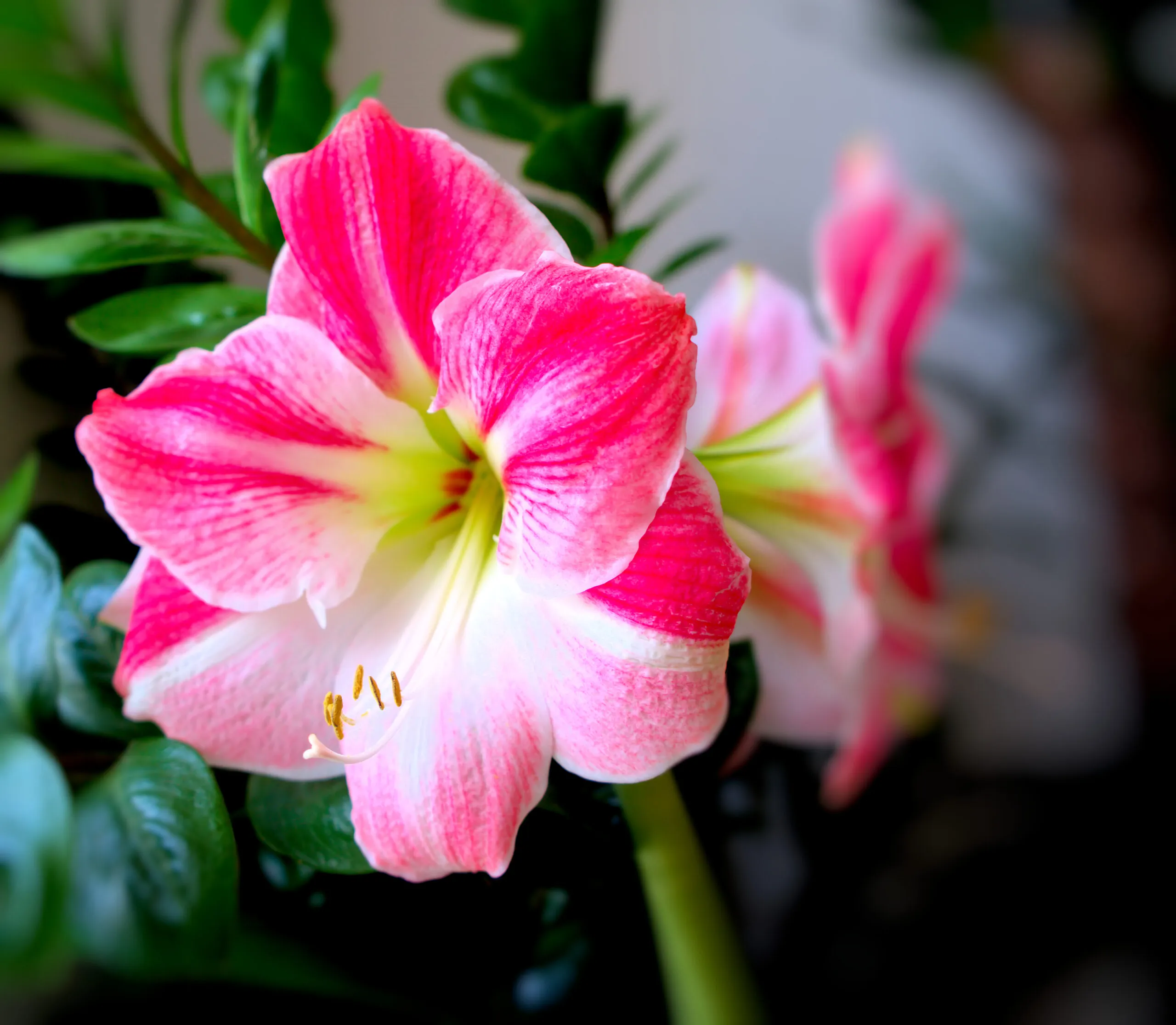
Autumn crocus (Colchicum autumnale)
Poisonous characteristics: The entire Autumn Crocus contain a toxic alkaloid called colchicine. Colchicine can cause severe damage to the gastrointestinal system, liver, kidneys, respiratory system, or central nervous system. Ingesting this plant could lead to death so definitely get rid of this one if you have it!
If your cat eats this plant you may notice:
- Drooling
- Vomiting
- Bloody diarrhea
- Seizures
- Panting
- Restlessness
- Lethargy
- Loss of appetite
- Excess thirst
- Weakness
- Behavioral changes

Azaleas (Rhododendron spp.)
Poisonous characteristics: Azaleas contain grayanotoxins, which can cause damage to the skeletal and cardiac systems.
If your cat eats this plant you may notice:
- Vomiting
- Diarrhea
- Weakness
- Drooling
- Abdominal pain
- Loss of appetite
- Abnormal heart rate
- Depression
- Tremors
- Seizures
- Temporary loss of sight

Castor Bean (Ricinus communis)
Poisonous characteristics: Castor beans contain ricin, a highly toxic compound that can be fatal.
If your cat eats this plant you may notice:
- Loss of appetite
- Drooling
- Abdominal pain
- Vomiting
- Excessive thirst
- Weakness
- Trembling
- Sweating
- Coordination loss
- Difficulty breathing
- Fever
- Bloody diarrhea
- Convulsions
- Collapse
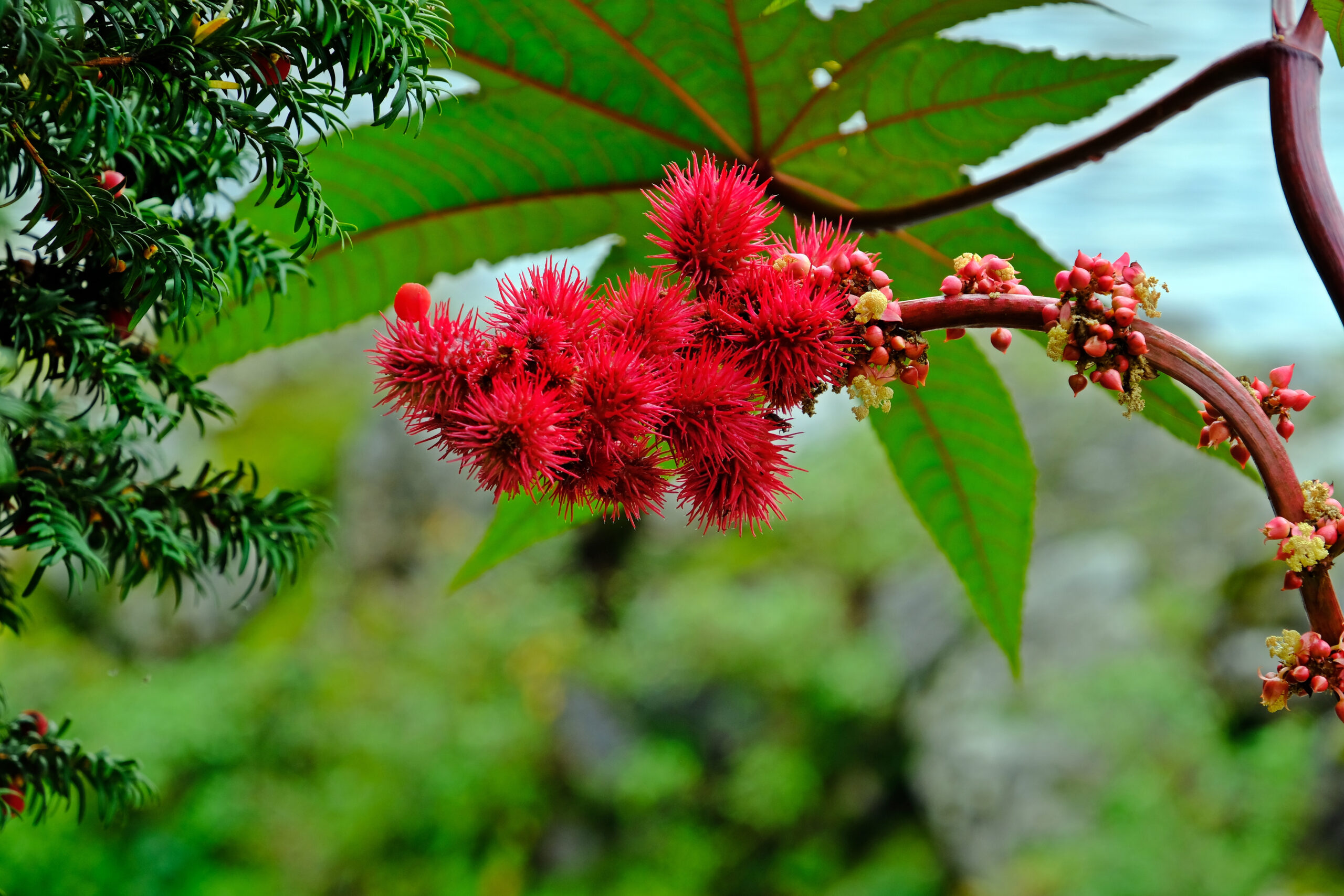

Chrysanthemums (Chrysanthemum spp.)
Poisonous characteristics: The flowers contain pyrethrins, which are used as pesticides.
If your cat eats this plant you may notice:
- Vomiting
- Diarrhea
- Loss of appetite
- Excess salivation
- Loss of coordination
- Skin irritation
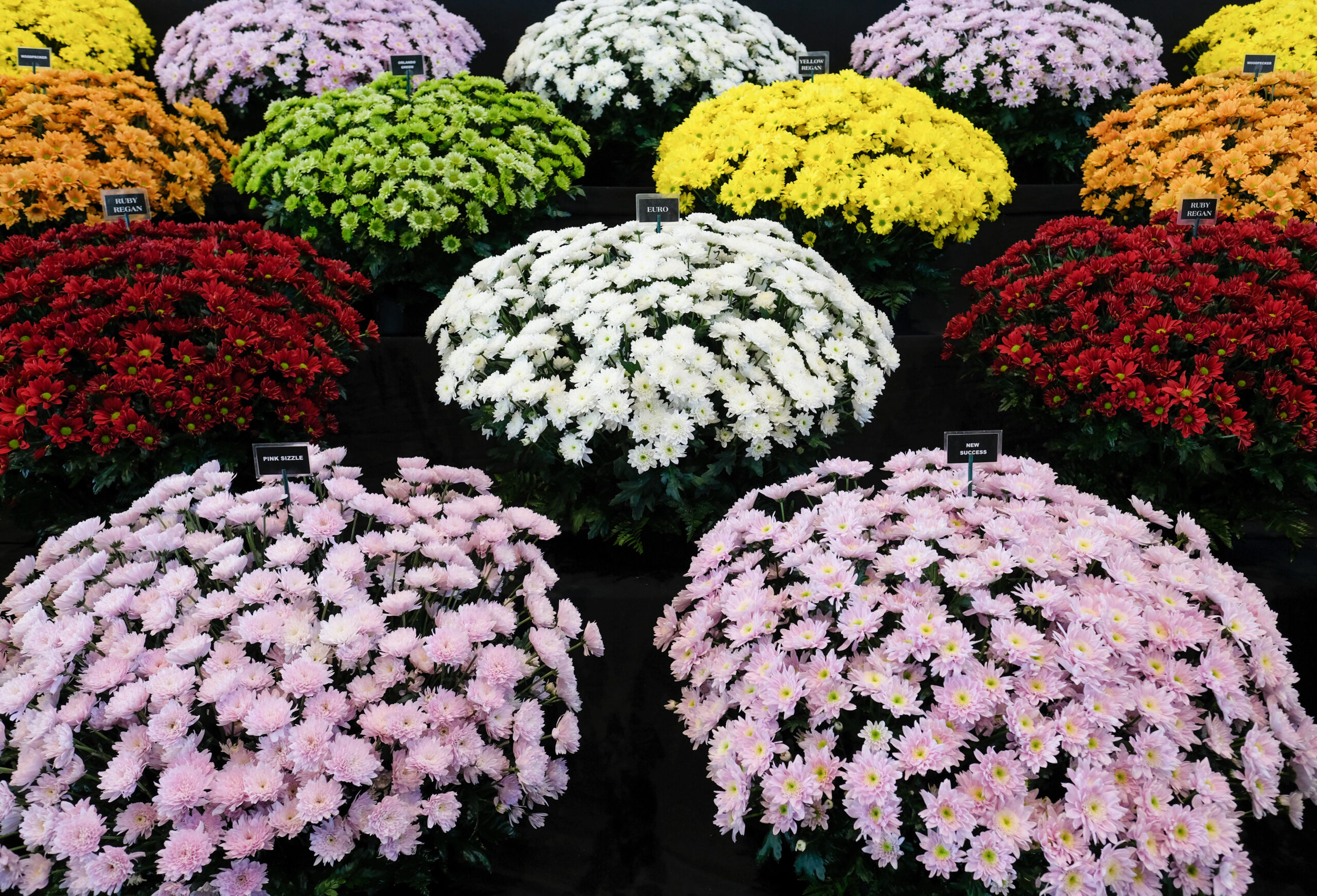
Cyclamen (Cyclamen spp.)
Poisonous characteristics: Cyclamens contain saponins. These can cause irritation when ingested in small quantities but can cause far more severe issues — even death — if consumed in large quantities.
If your cat eats this plant you may notice:
- Drooling
- Vomiting
- Diarrhea
- Abnormal heart rate
- Seizures

Daffodils (Narcissus spp.)
Poisonous characteristics: Daffodil bulbs contain lycorine. This triggers vomiting, they also contain sharp crystals that can cause severe irritation.
If your cat eats this plant you may notice:
- Drooling
- Vomiting
- Diarrhea
- Abdominal pain
- Abnormal heart rate
- Abnormal breathing
- Low blood pressure
- Tremors
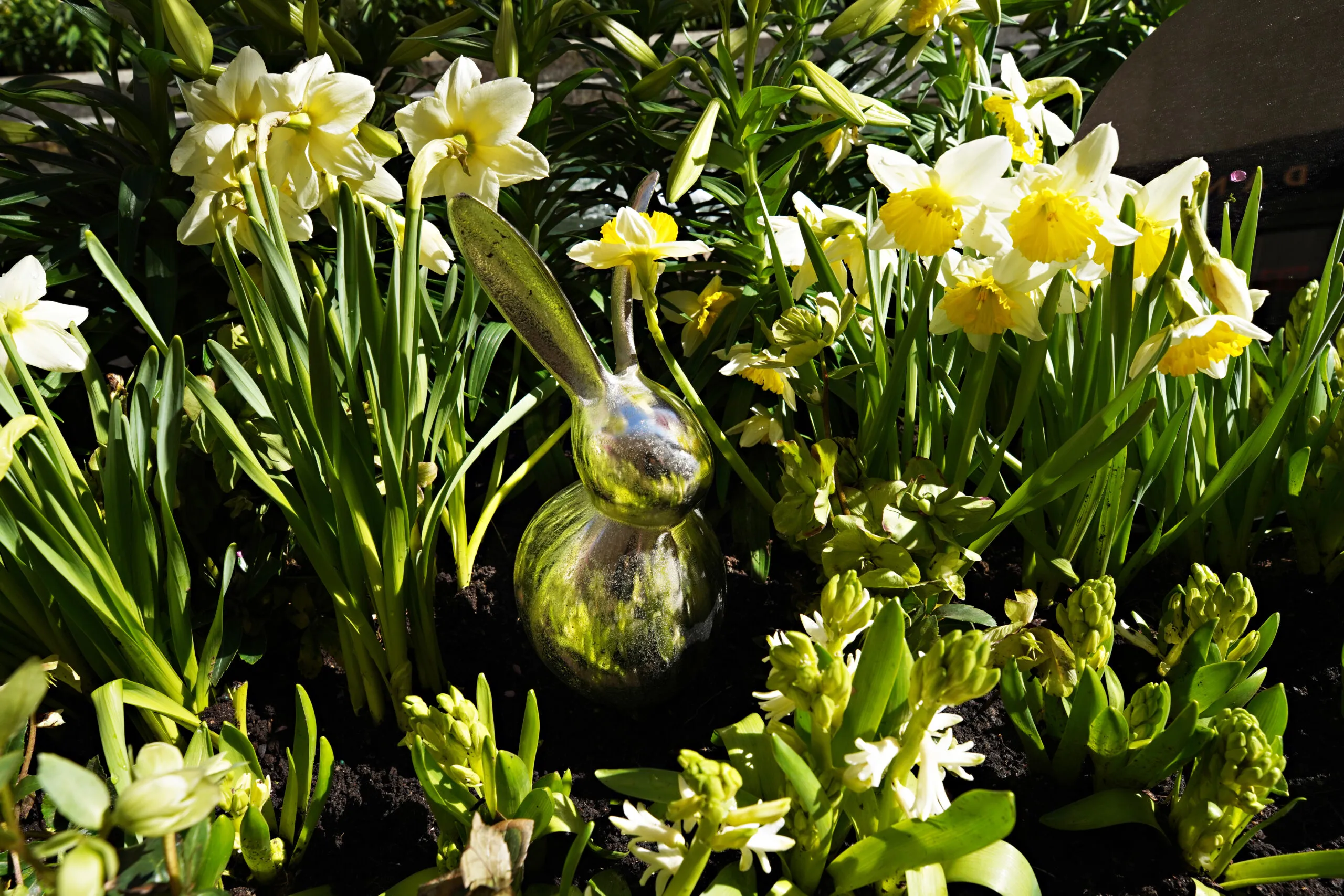
Devil’s ivy (Epipremnum aureum)
Poisonous characteristics: Insoluble calcium oxalate crystals are found in Devil’s ivy. These crystals can irritate and penetrate tissue in the mouth and gastrointestinal tract when ingested.
If your cat eats this plant you may notice:
- Swollen mouth, tongue, and lips
- Oral irritation or pain
- Drooling
- Difficulty swallowing
- Vomiting
- Loss of appetite
- Rarely: Difficulty breathing

Dumb cane (Dieffenbachia spp.)
Poisonous characteristics: Dumb cane is another plant that contains insoluble calcium oxalate crystals. As previously mentioned this can irritate and penetrate tissue in the mouth and gastrointestinal tract.
If your cat eats this plant you may notice:
- Burning and pain in the mouth
- Drooling
- Difficulty swallowing
- Vomiting
- Loss of appetite
- Rarely: Difficulty breathing

Elephant ear (Colocasia esculenta)
Poisonous characteristics: Another plant that contains the common insoluble calcium oxalate crystals, which can irritate and penetrate tissue in the mouth and gastrointestinal tract when ingested.
If your cat eats this plant you may notice:
- Swollen mouth, tongue, and lips
- Oral irritation
- Drooling
- Vomiting
- Difficulty swallowing
- Loss of appetite
- Rarely: Difficulty breathing

English ivy (Hedera helix)
Poisonous characteristics: The ivy leaves and berries contain triterpenoid saponins. Both of which can irritate the gastrointestinal system.
If your cat eats this plant you may notice:
- Drooling
- Vomiting
- Abdominal pain
- Diarrhea

Eucalyptus (Eucalyptus cinerea)
Poisonous characteristics: Eucalyptus oil can damage cats’ internal organs as they are unable to digest it.
If your cat eats this plant you may notice:
- Drooling
- Vomiting
- Diarrhea
- Depression
- Weakness
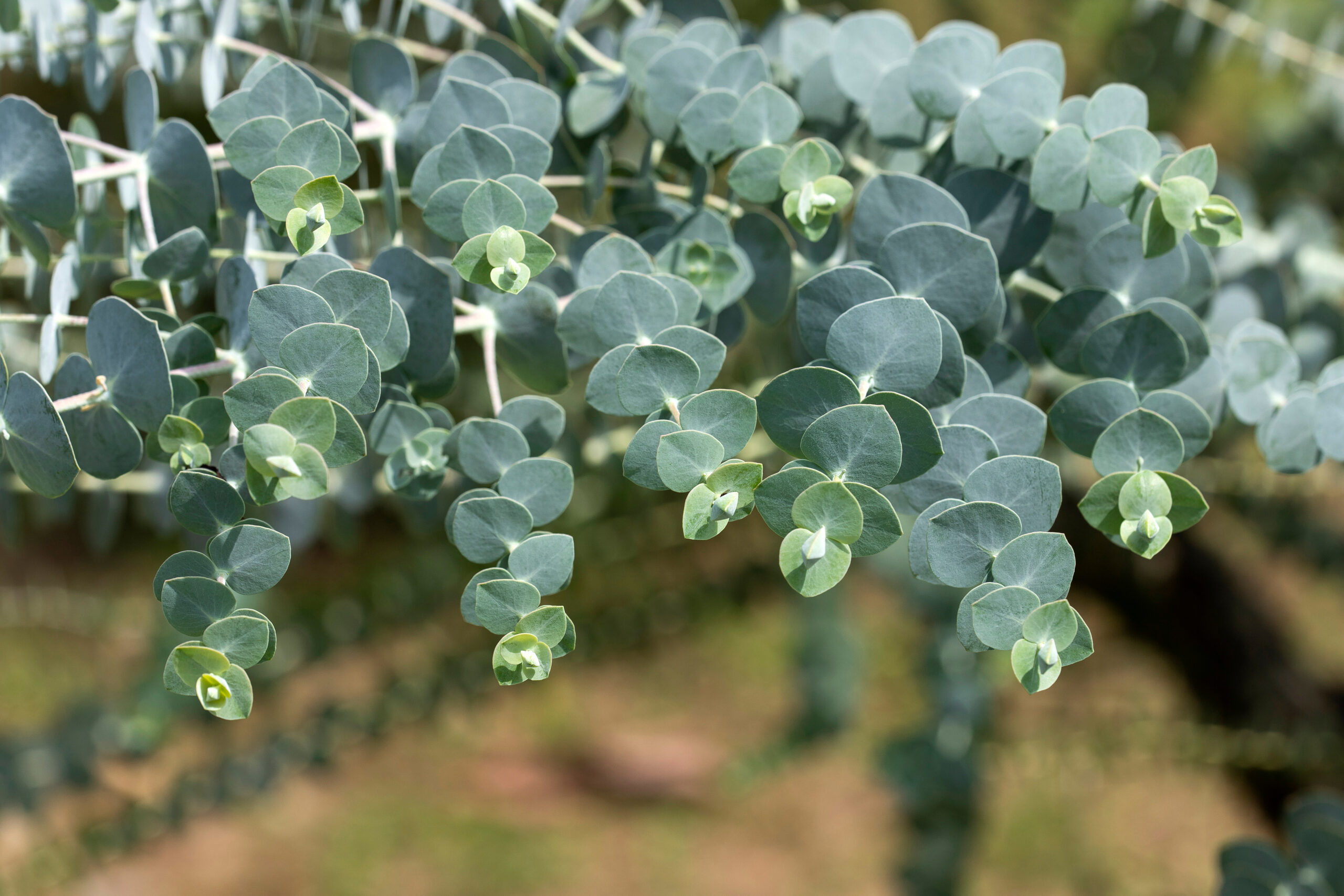
Foxglove (Digitalis purpurea)
Poisonous characteristics: Another plant that contain cardiac glycoside toxins, poisons that affect the cardiac muscles and can lead to death.
If your cat eats this plant you may notice:
- Irregular heart rate
- Weakness
- Vomiting
- Diarrhea
- Drooling
- Dilated pupils
- Seizures

Garlic (Allium sativum)
Poisonous characteristics: Garlic contains N-propyl disulfide. If consumed in large quantities this causes gastrointestinal upset and anemia in cats.
If your cat eats this plant you may notice:
- Weakness
- Rapid heart rate
- Panting
- Bloody urine
- Vomiting
- Diarrhea
- Abdominal pain
- Lethargy
- Pale gums
- Collapse

Hyacinth (Hyacinthus orientalis)
Poisonous characteristics: Hyacinth contains the toxin lycorine, with a high concentration in the bulbs. Symptoms of ingesting lycorine include vomiting and gastrointestinal upset.
If your cat eats this plant you may notice:
- Severe vomiting
- Diarrhea
- Blood in urine or feces
- Drooling
- Rapid heart rate
- Difficulty breathing
- Depression
- Tremors
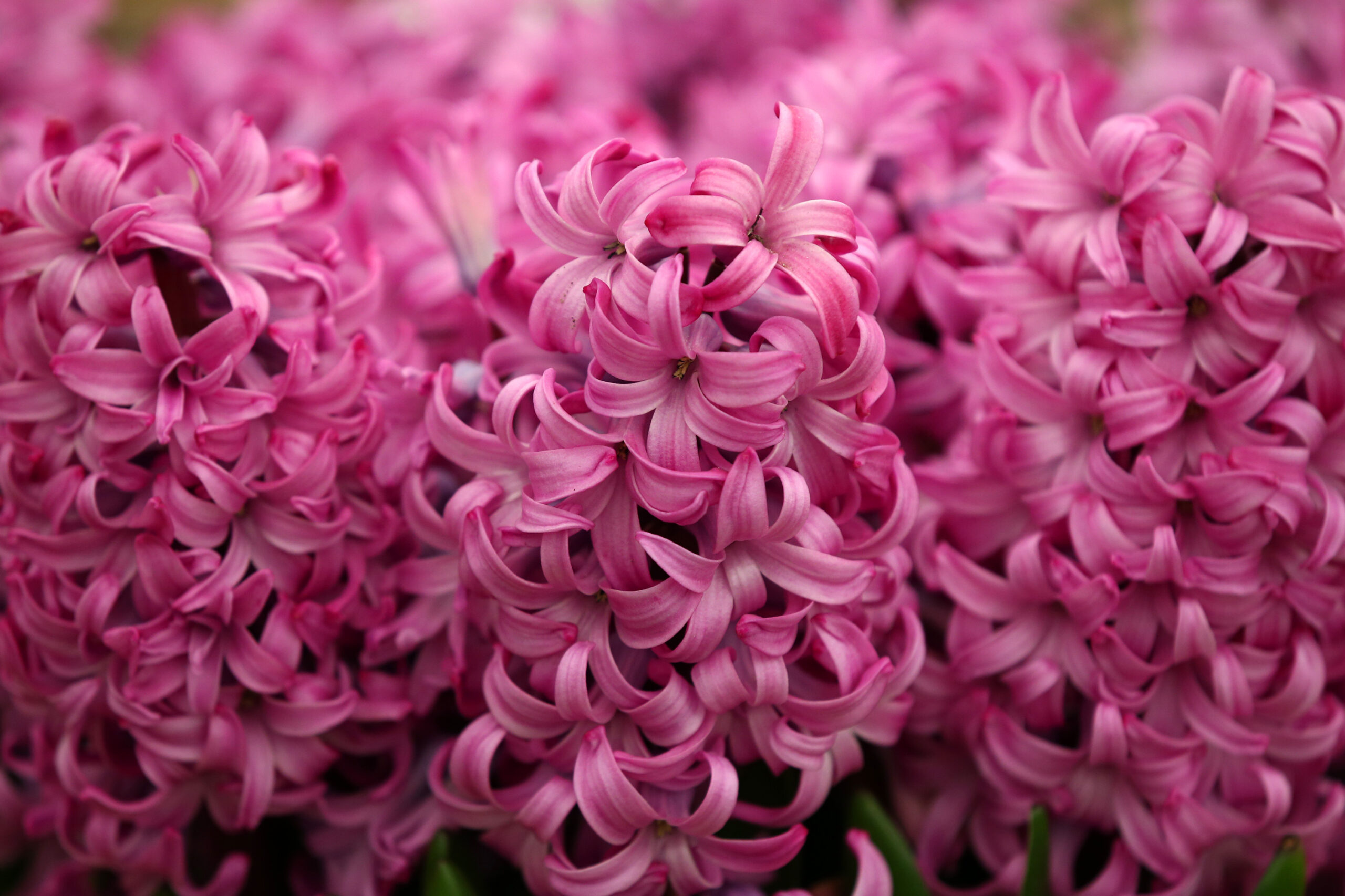
Hydrangea (Hydrangea arborescens)
Poisonous characteristics: Hydrangea leaves and flowers contain cyanogenic glycosides, these can disturb the gastrointestinal system when ingested.
If your cat eats this plant you may notice:
- Vomiting
- Diarrhea
- Depression
- Lethargy

Iris (Iris spp.)
Poisonous characteristics: All species of irises contain glycoside compounds. These compounds irritate internal tissue and can lead to a variety of health issues.
If your cat eats this plant you may notice:
- Drooling
- Vomiting
- Diarrhea
- Lethargy

Jade (Crassula argentea)
Poisonous characteristics: The exact toxins are unknown but the consuming the leaves does cause symptoms in cats.
If your cat eats this plant you may notice:
- Vomiting
- Loss of coordination
- Depression

Kalanchoe (Kalanchoe spp.)
Poisonous characteristics: Kalanchoe contains bufadienolides in the entire plant. Bufandienolides are toxins that affect the cardiac muscles and irritate the gastrointestinal tract. If ingested in large amounts, they can cause cardiac issues.
If your cat eats this plant you may notice:
- Vomiting
- Diarrhea
- Abnormal heart rate
- Weakness
- Collapse

Lilies (Lilium spp.)
Poisonous characteristics: All parts of lilies contain toxins that can cause kidney failure. Lilies are so poisonous that even if your cat only nibbles a tiny amount or gets into the water from the vase it can be impacted.
If your cat eats this plant you may notice:
- Excessive thirst
- Weakness
- Loss of appetite
- Changes in behavior
- Diarrhea that may contain blood
- Vomiting that may contain blood

Lily of the valley (Convallaria majalis)
Poisonous characteristics: All parts of the Lily of the valley contain cardiac glycosides, which affect the heart and the gastrointestinal system
If your cat eats this plant you may notice:
- Vomiting
- Diarrhea
- Abnormal heart rate
- Disorientation
- Seizures
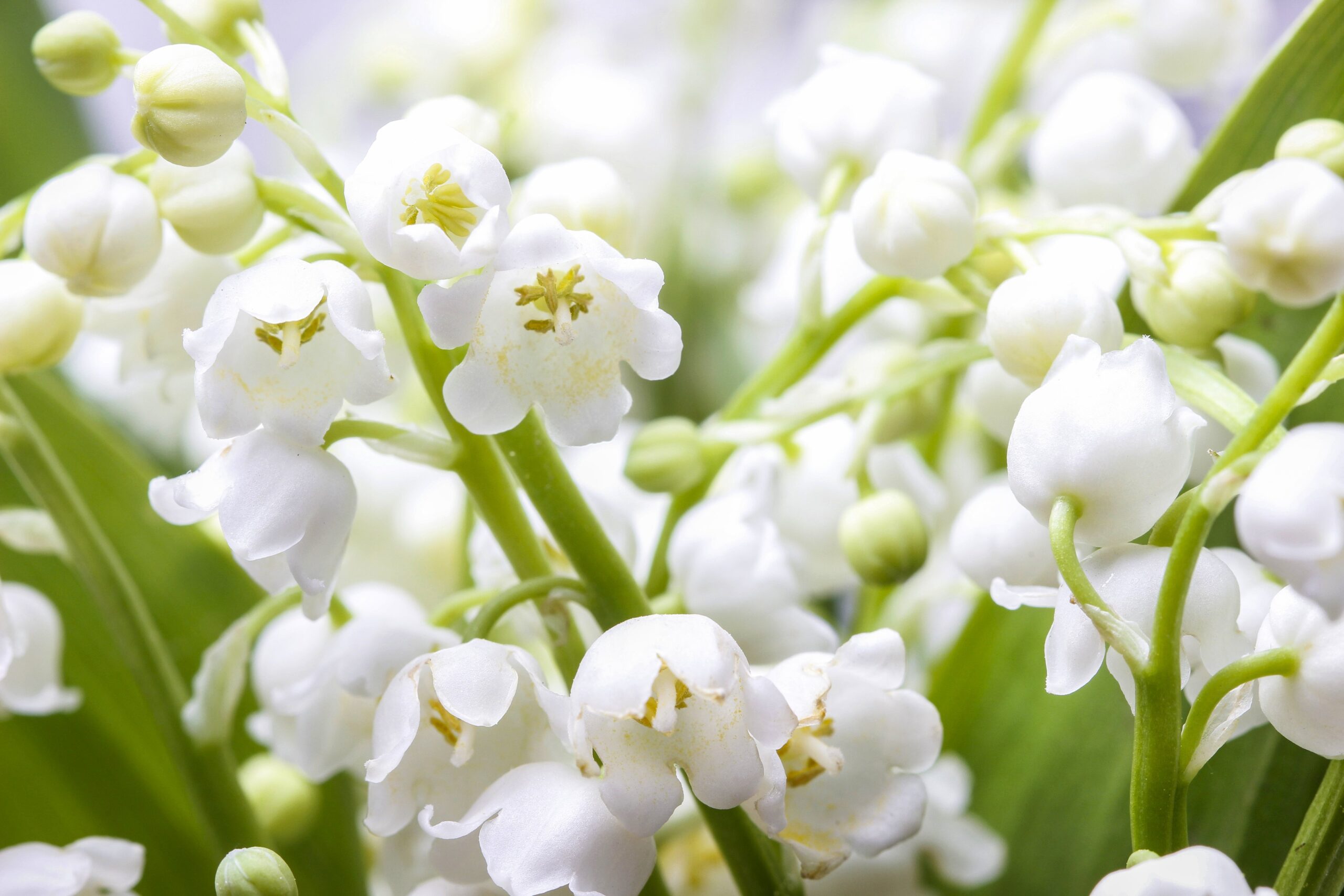
Oleander (Nerium oleander)
Poisonous characteristics: The lily of the valley is another plant the entirety of which contains cardiac glycoside toxins. These toxins interfere with the heart muscle and often cause gastrointestinal upset. In severe cases, ingestion can cause death.
If your cat eats this plant you may notice:
- Drooling
- Abdominal pain
- Diarrhea
- Vomiting
- Abnormal heart rate
- Seizures

Peace lily (Spathiphyllum spp.)
Poisonous characteristics: All parts of the peace lily contain sharp insoluble calcium oxalate crystals. As previously mentioned these crystals will pierce the tissue of the mouth and gastrointestinal tract. In severe cases, the upper airway may swell and make breathing difficult.
If your cat eats this plant you may notice:
- Burning or irritation in the mouth, tongue, and lips
- Drooling
- Vomiting
- Difficulty swallowing
- Loss of appetite
- Rarely: Difficulty breathing

Poinsettia (Euphorbia pulcherrima)
Poisonous characteristics: Poinsettia plants contain a milky sap that is mildly toxic and may cause irritation. The popular misconception of poinsettias as highly poisonous and dangerous is incorrect.
If your cat eats this plant you may notice:
- Oral irritation
- Skin irritation
- Drooling
- Vomiting
- Diarrhea

Sago palm (Cycas revoluta)
Poisonous characteristics: All sago palm parts contain cycasin. Cycasin is a dangerous toxin that affects the liver, nervous system, and gastrointestinal system. The poison is most highly concentrated in the seeds. Ingesting sago palm can lead to death if your cat doesn’t receive medical attention quickly.
If your cat eats this plant you may notice:
- Vomiting
- Excessive thirst
- Loss of appetite
- Drooling
- Diarrhea
- Weakness
- Abdominal pain
- Seizures
- Lethargy
- Black, tarry stool

Snake plant (Sansevieria trifasciata)
Poisonous characteristics: All parts of a Snake plant contain saponins. Ingesting saponins can affect the gastrointestinal system and sometimes the respiratory system and neurological pathways.
If your cat eats this plant you may notice:
- Vomiting
- Diarrhea
- Loss of appetite
- Lethargy
- Drooling

Spanish thyme (Coleus amboinicus)
Poisonous characteristics: All parts of the snake plant contain essential oils that can upset your cat’s stomach if ingested. Essential oils can also cause skin irritation on contact.
If your cat eats this plant you may notice:
- Vomiting (sometimes bloody)
- Diarrhea (sometimes bloody)
- Loss of appetite
- Depression
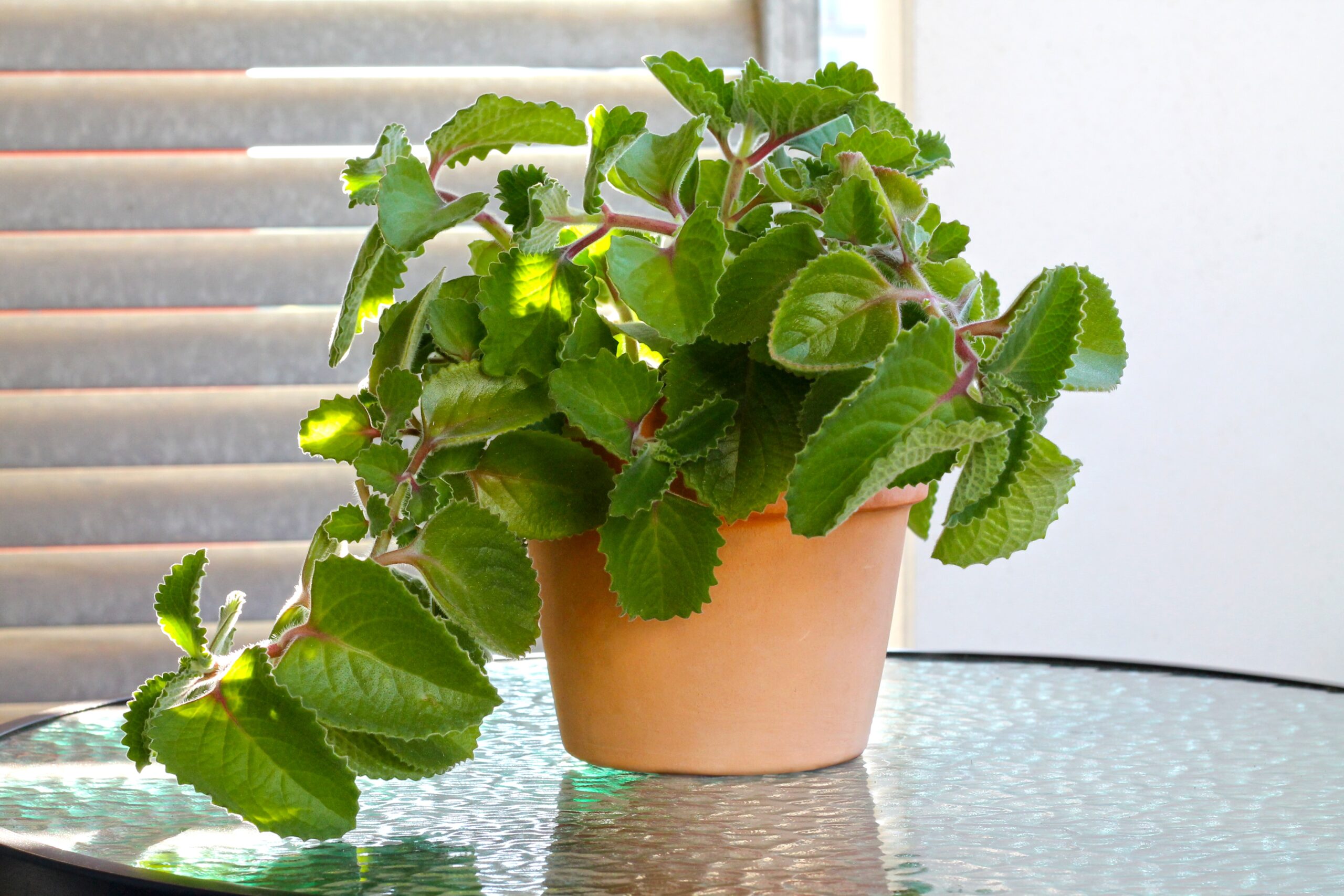
Tomato plant (Lycopersicon spp.)
Poisonous characteristics: The green parts of the plant, not including the ripe tomato fruit, contain solanine. If consumed in large quantities solanine affects the gastrointestinal tract.
If your cat eats this plant you may notice:
- Drooling
- Loss of appetite
- Weakness
- Depression
- Lethargy
- Dilated pupils
- Slow heart rate
- Confusion
- Vomiting
- Diarrhea

Tulips (Tulipa spp.)
Poisonous characteristics: All parts of the Tulip plant contain allergenic lactones or similar alkaloids. These can cause irritation in the mouth and digestive tract in small amounts. They can lead to more severe internal issues in large amounts. The bulbs contain a higher concentration of toxins than the leaves or stems.
If your cat eats this plant you may notice:
- Drooling
- Vomiting
- Diarrhea
- Depression
- When consumed in large amounts: Increased heart rate
- When consumed in large amounts: Difficulty breathing

Wisteria (Wisteria spp.)
Poisonous characteristics: The plant, especially the seeds and pods, contain lectin and wisterin glycoside. These can upset the gastrointestinal system of cats.
If your cat eats this plant you may notice:
- Vomiting (sometimes bloody)
- Diarrhea
- Depression
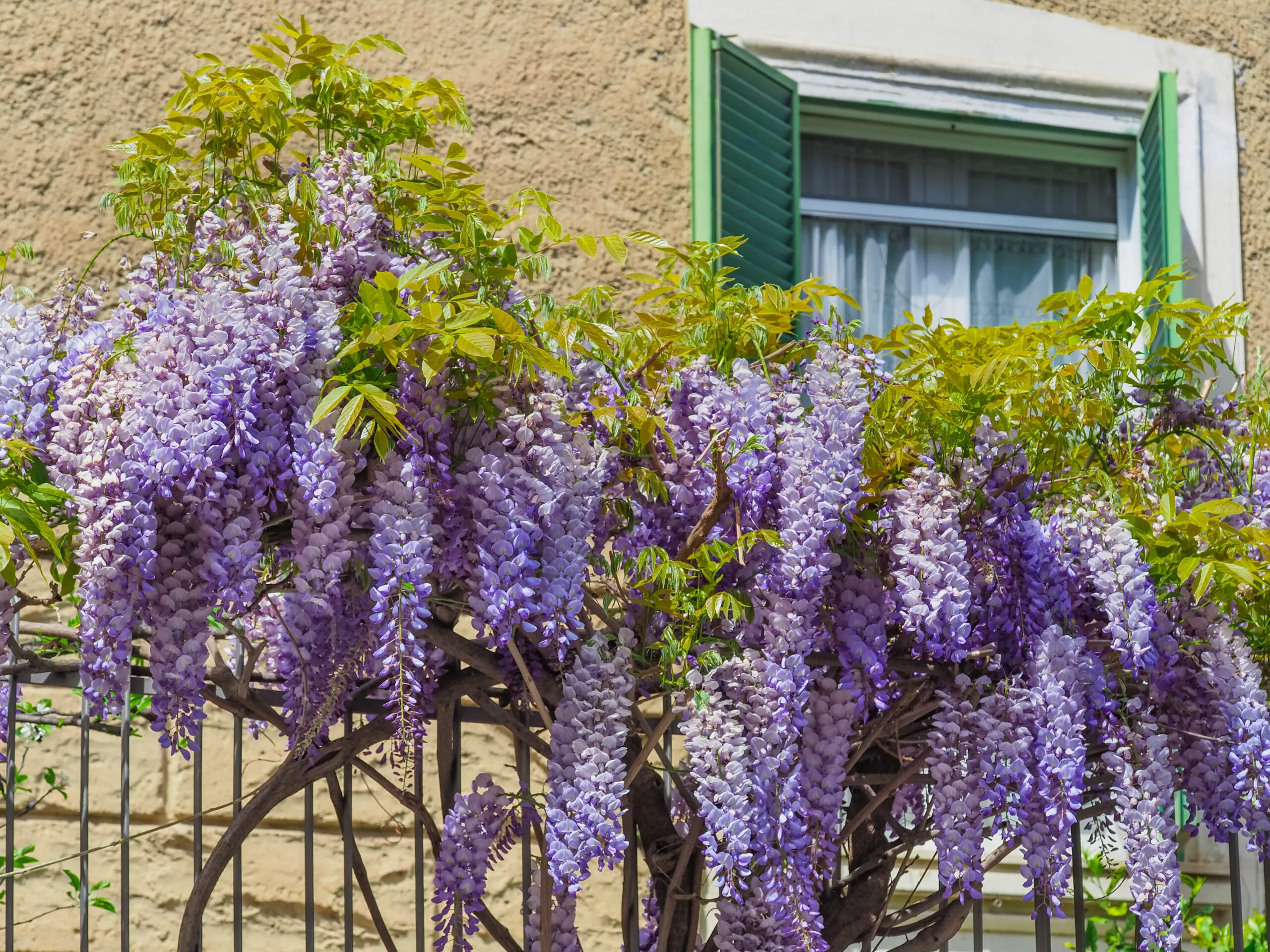
Yew (Taxus spp.)
Poisonous characteristics: All parts of the Yew plant are extremely poisonous. They contain taxines. Taxines affect the cardiovascular system and can cause acute heart failure. Consumption may lead to death if your cat doesn’t receive immediate medical attention.
If your cat eats this plant you may notice:
- Drooling
- Vomiting
- Difficulty breathing
- Seizures
- Weakness
- Drops in heart rate
- Dilated pupils


